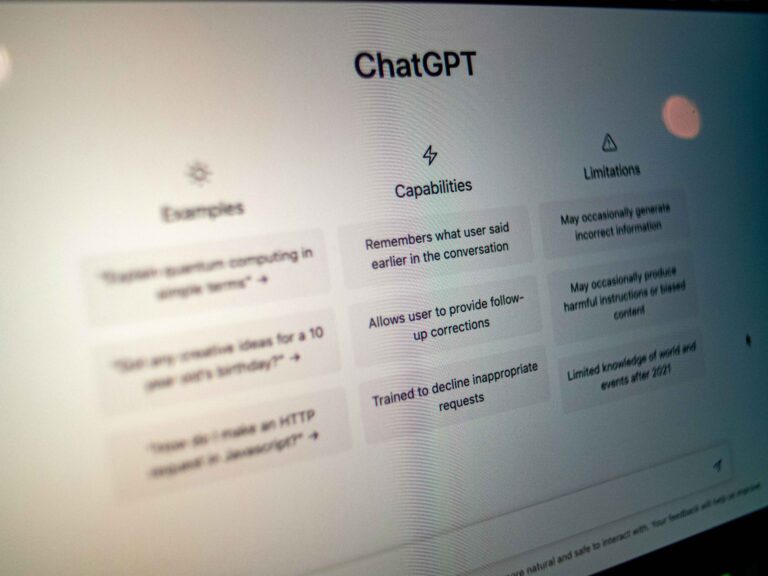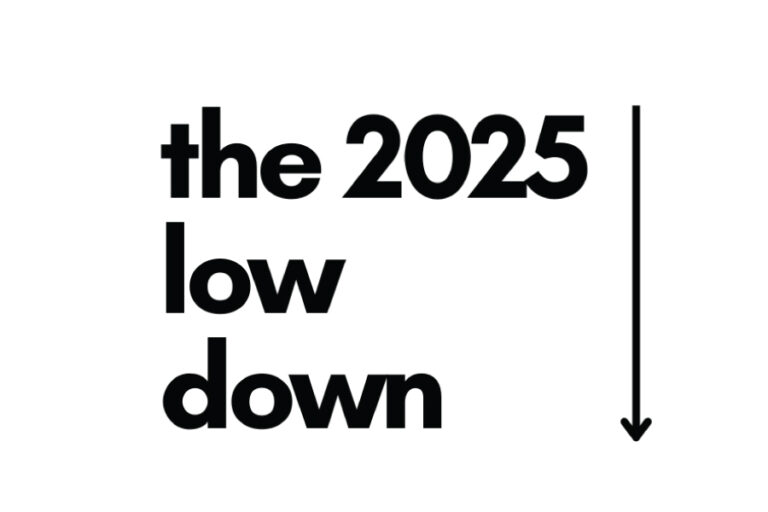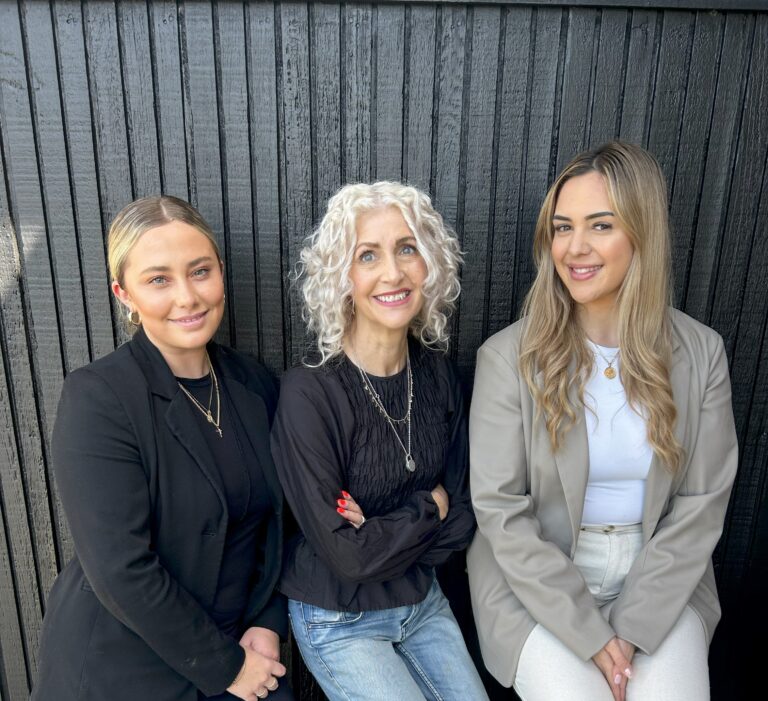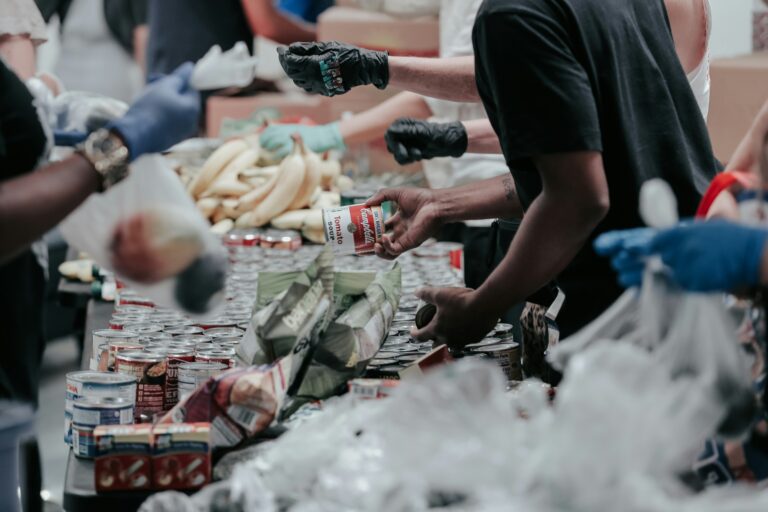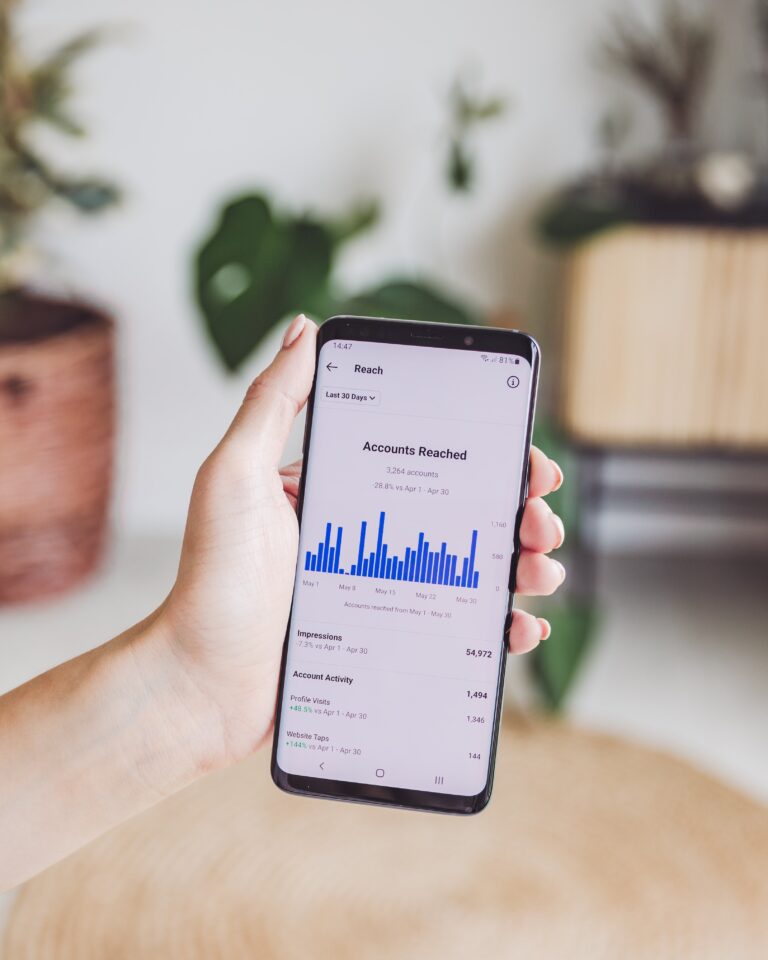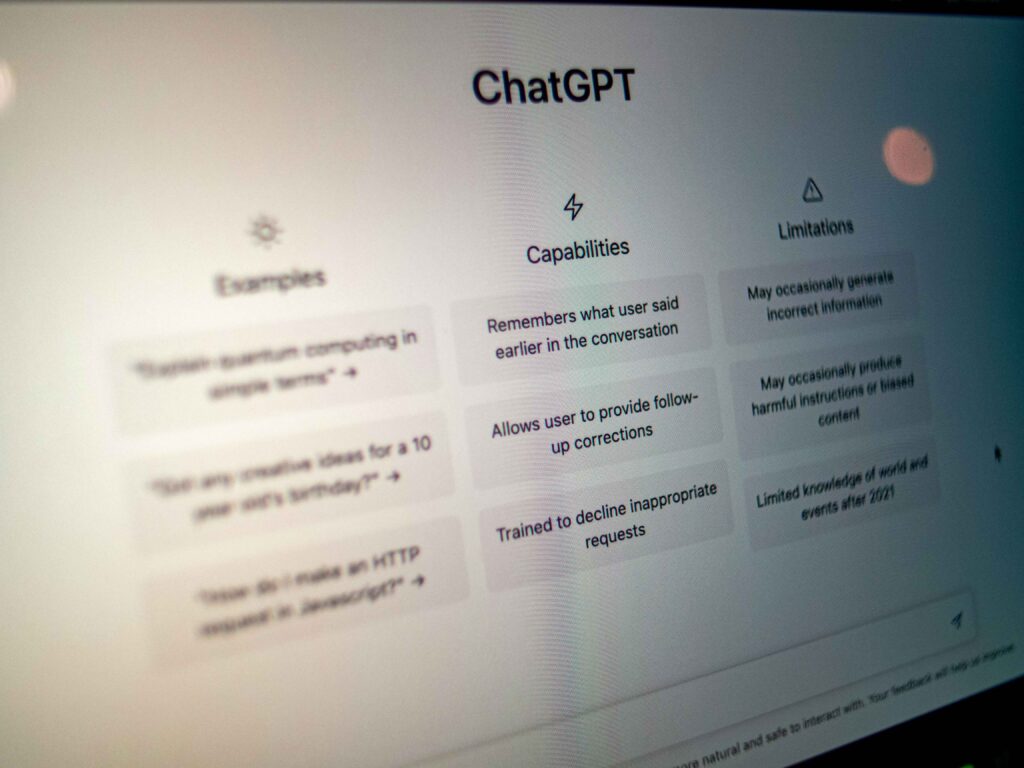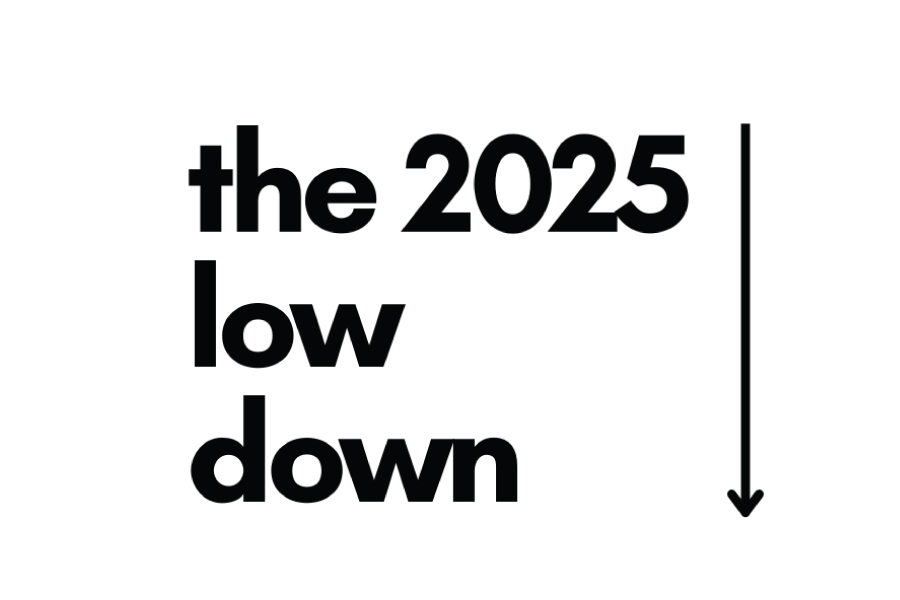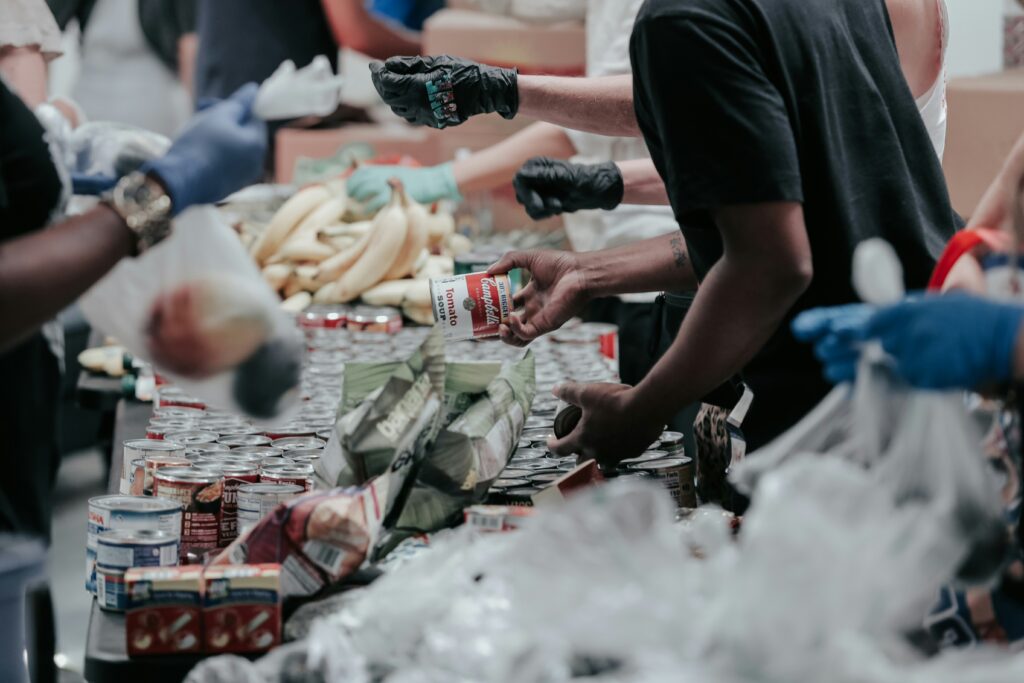When Campaigns Pause: Why Empathy Can Strengthen Partnerships
-
Posted by
Katie West
- 0 comments
When Campaigns Pause: Why Empathy Can Strengthen Partnerships

In the world of public relations, we often celebrate the campaigns that go live — the big moments, the glossy results, the visible wins. But just as important are the moments that don’t go ahead. The quiet ones. The complex ones. The human ones.
A little while ago, we were managing a campaign between a trusted brand and a well-respected content creator. The collaboration had been confirmed. Product delivered. Timeline mapped out. We were ready to go live. Then, an email arrived.
The creator explained they no longer felt comfortable posting — not because of the product or the brand, both of which they continued to support, but because of what was happening in the world.
“I don’t feel good about this in hindsight. People are suffering. I don’t know why I didn’t consider this earlier, but this is how I feel now.”
Their concern wasn’t based on personal alignment or brand values. It came from empathy and the discomfort of promoting a consumer product during a time when others, globally, are going without even the most basic of necessities. While many of us in New Zealand remain physically unaffected by certain humanitarian crises, this creator was feeling it deeply. And they didn’t want their content to feel tone-deaf or out of touch.
In that moment, they weren’t asking to be let out of anything. They were simply asking to be heard. As the agency managing both sides, our role wasn’t to take a side — it was to listen, guide, and hold space for a respectful and constructive conversation.
We laid out the situation clearly for the client, and more importantly, we considered the bigger picture.
Yes, the content had been agreed. Yes, the campaign was ready to go. But what mattered more was the long-term relationship. The integrity of both parties. The empathy that needed to flow both ways.
To the brand’s credit, their response was exactly what we hoped for. Calm. Considered. Compassionate. Rather than force a decision either way, we worked together to create a bridge plan — one that acknowledged the creator’s concerns and protected the brand’s need to remain neutral and inclusive for its broad customer base.
The outcome? A pause. Not a cancellation. Not a breakdown. Just a pause — until the timing felt right for everyone involved.
It reminded us a lot of what we saw during the early days of Covid. In that time, creators, clients, and media all had to recalibrate quickly. Scheduled content suddenly felt jarring. Product launches needed to shift. Messaging had to evolve, not out of obligation, but out of empathy.
We saw a collective recognition that how something feels matters just as much as what it says. And that’s where the best PR lives — in the space between those two things.
This recent situation reaffirmed something we’ve always believed:
- You can hold strong brand boundaries and still lead with empathy.
- You can protect a client’s values while respecting a creator’s point of view.
- And you can preserve a relationship, even when the content doesn’t go live.
As agencies, we’re often behind the scenes making sure the right decision is made — not just the right now decision. We don’t always talk about these moments, but they’re the ones that define how we work and who we are.
When someone says, “This no longer feels right to me,” it’s not a rejection. It’s a chance to pause, reflect, and sometimes, choose a better path forward — together.
Subtitle text example
Title text example
Text after title text example
Subtitle text exampleTitle text example
Text after title text example
AI vs. Human Writing – can you spot the difference?
-
Posted by
Katie West
- 0 comments
Do you think you can tell if something was written by AI? You might be surprised to know that despite AI being supposed to be light years ahead, most sites, such as Chat GPT, have writing quirks.
Here are five dead giveaways:
- The em dash obsession — AI loves a good em dash (—) and sprinkles them everywhere, not once or twice in a few hundred words instead multiple in every paragraph. Real people – we do but not as often [and did you know there is more than one form of dash?]
- Cliché central: ‘now more than ever’ [a phrase we have come to loathe], ‘moreover’, ‘game-changer’, ‘at the end of the day’ AND ‘in today’s fast-paced world’ are all phrases that AI generated text leans on [and we wondered why we were starting the see these phrases reappearing!]. Real people – we mix it up.
- Oxford comma overload AI religiously uses the Oxford comma and also sprinkles them everywhere, while UK English speakers often leave it out.
- Too perfect? Too formal: AI avoids contractions [do not instead of don’t], making it sound stiff. Real people – we are more likely to write the way we talk.
- US vs. UK English: AI defaults to US spelling [realize, favor, color], loves double quotes “ ”, and overuses exclamation marks!!
Next time you’re reading something, see if you can spot the AI fingerprints.
What is a key giveaway when you ask an AI tool to list or create 10 things? 8 will be solid, and then …it starts repeating itself. The same answer, just reworded. A bit like a psychometric test, where the same question is asked five different ways to check if you’re paying attention. AI does the same thing, just dressed up differently.
Here are the top 5 ways AI writing gives itself away:
- Rewording, not rethinking: AI often cycles through the same ideas, just phrased differently—like a personality test rewording the same question.
- The ‘List Fatigue’ effect: AI-generated lists start strong but taper off into vague or repetitive points.
- Overly symmetrical sentences: AI loves balance—too much. As people we mix it up and AI tends to mirror structures predictably.
- Echoing without insight: AI pieces together what already exists, but doesn’t generate new thought, just reassembled patterns.
- Flawless… to a fault: AI writing can feel too polished, too structured and lacking in quirks, contradictions, and personality that makes human writing engaging. Do you see a pattern? AI isn’t thinking – most of the time it’s just reshuffling the deck.
And.. the time is fast approaching where if you use it and don’t declare it in your writing, be prepared to be called out for it.
PR in 2025 and what of AI
-
Posted by
Katie West
- 0 comments
PR in 2025
Text after title text example
Public relations is evolving fast, and as we step into 2025, brands again have to consider how they will stay ahead of the curve to remain relevant – and it has had people talking.
Here’s what we see as shaping the PR landscape in New Zealand and across the Asia-Pacific region:
- AI is the new PR assistant – Whether generating insights, monitoring media, or crafting data-driven campaigns, AI will be here to help, as it has been for a while. We will see more advancements this year, but it will not replace human creativity, relationships, intimate knowledge, or other factors! People will become more savvy, spotting AI-generated text and copy being used, and disengage. The key challenge will be ensuring AI is used as an enabler rather than a shortcut to ticking a box.
- Transparency is everything – PR spin is out; real, open, and honest storytelling is in [as it should be]. Audiences want to know what brands truly stand for and will be emboldened to ask more questions.
- Values continue to rise in importance – Corporate social responsibility isn’t optional. Customers expect brands to take a stand on key issues.
- Crisis Management is a must-have – The digital world moves at lightning speed, and so do PR crises. Brands that prepare in advance will navigate challenges with confidence.
- PR and other marketing will become greater friends – siloed communications no longer work. A seamless PR and social media strategy with other marketing channels is the way forward. Think YouTube, EDM, affiliate marketing, and podcasts.
As 2025 unfolds, brands that embrace these shifts will thrive and move on from 2024 faster and in a better position to reap an upturn.
Is your PR strategy ready? Contact us if you think we can help.
What the F is in our products – how marketing is hurting your head
-
Posted by
Katie West
- 1 comment
After finding an honest and natural hair brand that has absolutely no nasties – my hair has never looked better. Despite the transition it had to go through, including detoxing from damaging ingredients, meant all my scalp and hair problems have dwindled away. You may be asking, but how? Because every hair company prides themselves on looking after hair? Not true in the slightest. It is all marketing honey. Let’s unpack it…
Being transparent, I was none the wiser in how products affected my hair, until I worked on the relaunch of the A’kin range. Then I realised a lot of products labelled ‘healthy for hair’ were in fact not, despite looking appealing. The ingredients list of many mass market products is filled with ‘crap’ [a bunch of damaging chemicals] – including manmade ingredients formulated to give the illusion of healthy hair, when in fact it has lasting negative effects.
Now I am no ingredient genius, but here’s what I know:
- ‘Sulphates’ are the ingredients that create the luxe bubbles that we associate with cleaning. They are cleaning, but they also damage the hair, and can strip the scalp of natural oils. The sulphates most found are sodium lauryl sulphate (SLS) and sodium laureth sulphate (SLES).
- ‘Parabens’ are used as preservatives in pharmaceutical and cosmetic products, that prevent bacteria from growing; to increase shelf life – this ingredient can be a hormone disrupter depending on the paraben, and can irritate the scalp. Parabens look like methylparaben, propylparaben, butylparaben, and ethylparaben.
- ‘Silicones’ are included to make your hair look and feel silky smooth; but in fact, they can build up on the follicles and prevent moisture of the natural hair. Keep an eye on dimethicones, cyclomethicone, amodimethicone, and cyclopentasiloxane.
- ‘Alcohol’ is a damaging ingredient that promotes quick absorption of the ingredients, but also means it dries your scalp out. One example is ‘rubbing alcohol’ found in cosmetics as SD alcohol, ethanol or ethyl, isopropyl and methanol. An alternative is organic alcohols which while more expensive are much better for the scalp.
- Lastly, ‘fragrances’ – the one thing that is a red flag, when it comes to fragrances, is that hair care companies, don’t have to list the ingredients, that go into that fragrance, so… enough said. Natural fragrances are derived from organic ingredients, so are a much better alternative. Synthetic fragrances to look out for include aldehydes, esters, ketones, hydrocarbons, and phenols.
Let’s talk marketing buzz words, and I can say I still get fooled by these words, but it is something I am more aware of. Ticking the ‘marketing buzz words’ box doesn’t always mean good for your hair and scalp. It isn’t like you can put, “packed with parabens and silicones” on the front.
A few buzz words to note are:
- Non-Toxic
- Clean
- Safe
- Chemical-Free
- All Natural
- Hair Growth
- Repair
- Nature Derived
- Chemical Free
- Botanical Formula
- Patented Formula
They are often placed on the front of the packaging. The reason these words are ‘marketing words’ is because most of these things are impossible to achieve. I have already said these can be in place for us to make a quick decision, while deflecting from the harmful and not good-for-our-hair ingredients.
Signs your haircare is failing you and you need to investigate are is scalp issues such as:
- an oily scalp
- increased sebum secretion
- compromised scalp barrier and scalp flaking or dandruff
- itchy scalp, and up to more severe conditions like seborrheic dermatitis
Aside from a dry, irritated, and itchy scalp, damaged and frizzy hair is also a key factor.
Scalp health and hair health is paramount to people’s wellbeing and quality of life. As with anything health related, what you eat and drink, really does make a difference to the health of your scalp.
Then, we have brands that are labelled natural, and are filled with botanical ingredients that do a powerful job for your hair, and its overall health. A’kin for example has done over 30 years of research alongside chemists and adhere to strict testing standards. This is to guarantee product safety, which plays a key part in their range proving to be healthy for the hair – and let me tell you, they work.
To wrap up, I know it can sound overwhelming, but all you need to do is whip out your device, and research the ingredients list found in your products. Know what to look out for and dive into the history of that product, to see if they are kind on your hair, or not. Once you get familiar with the ingredients, and marketing words, perfecting your routine is as simple as reading the back, and finding a range that ticks all the boxes… not just one.
India
Navigating the communication landscape
-
Posted by
Katie West
- 2 comments
It is easy to get overwhelmed by the landscape of communications especially when it continues to evolve. There is no distinct line, nowadays everything has become intertwined and when navigated correctly, it becomes an opportunity for businesses to reach a wide targeted audience. The team at bare.pr have put together some ways and tips to help make the journey more seamless.
Create an integrated approach
Gone are the days of streamlined approaches where a business focuses on just one strategy, integrated 360 campaigns create a complete approach to getting the most out of the narrative and create a cohesive stream of communication. This allows businesses to be consistent in their messages and reach a range of target audiences in a way they respond best to.
Social media
The role of social media in a changing communications landscape is extremely powerful as long as the brand understands the different social media platforms, what their audiences are on each of these and how best to approach the audience. If enough research is done and they tailor their approach, it opens an extremely valuable tool to communicate with these audiences by allowing conversation and letting the audience feel heard. Authenticity and a personal approach are what people are after in 2024 so ensuring this opens up deeper relationships.
Social media also allows people to go direct to the company, news and updates to be communicated in real time and more exposure to people that business wouldn’t typically reach. It provides insights and data which is invaluable and can allows them to be shared and tagged showing real connections and real reviews by their publics. Social media opens up a forum for businesses to become their own crisis management, align with creators and collaborate with people who explode creativity offering a new take on key messages beyond the branding campaigns.
AI
AI has meant more time for brands to focus on creation, strategy, and tailoring. Taking the stress and admin out of the job and allowing them to go further with research and messaging. Despite not being 100% accurate it is a great starting point for ideas and creativity.
Managing misinformation
Despite misinformation being more prominent than ever, thanks to the platforms we have now brands can speak on issues instantly and conversate where they can. Communication is still the most foundational skill in the whole landscape that will always need a human touch in order to create relationships. Speak up and speak truth!
Build relationships
Brands must know their audience, whether that is a client, customer or media – to build it you must actively listen and ask questions, understand them and how they like to be approached, pay interest in their lives and choose the channel they prefer. Beyond this, you must use strong emotional intelligence which leads to effective communication and relationship building. This includes empathy and human emotion, knowing how to deal with conflict and being aware of yourself and your part to play in the conflict. Effective communication is the key to business success and takes work and tweaking depending on the person or audience.
Know your brand
Lastly and most importantly to navigate the communications landscape you must know your brand. Businesses must cement their brand values throughout all their strategies and confirm their role in the business landscape. You must decide if you choose to stand for social issues or prefer to stay away, how you deal with things and what your approach will be to any challenges that come your way. You must decide what defines your business – whether that is price, experience of brand, methodology, diversity, shaping the future for generations to come or staying on brand. Once that is determined and stays consistent throughout, the business will thrive within the landscape.
International Women’s Day – let’s get real!
-
Posted by
Katie West
- 2 comments
Opinion: Mark your calendars if you haven’t already, International Women’s Day is coming up on Friday 8th of March. You may be thinking this is just another blog post from a company trying to do their due diligence when in fact it isn’t; we are here to call those people out.
When I got asked to write this blog post firstly, I could not tell you when the day was on the calendar and then I thought… but why?? We don’t see people continue to advocate any day other than on this date. We have our say then like everything else it gets lost and forgotten until it comes up again a year later.
Now we aren’t saying we don’t do our part because we do, we are a team of all women who work predominantly with woman owned or run businesses. Our entire work is based around relationships and trying to lift our clients, small businesses and woman wanting to grow, so in our everyday work we champion woman in every aspect.
Since 1975, this day has allowed us to see how far we have come as a sex, but it is also confronting and highlights what our goals are moving forward. The focus has always been equality for women; from voting to the gender pay gap – women have faced multiple challenges and damn we look good while doing it! But what has been done since then?
I am a Gen Z and in my generation people are constantly jumping on the next trend (look at TikTok as an example), there is just so much going on and the information overload means nothing gets focused on deeply – unless of course it is your life’s mission. It’s just society; things get forgotten and people jump to tick the box and feel like (or portray) they are doing good. I can’t speak for everyone but most people under 25 don’t what to think about IWD as there isn’t enough being shown, maybe it is just because woman achieving and making power moves don’t like to gloat unlike men.
However, what I have noticed, is many brands mark the day to talk about what they are doing to celebrate, but that is it! Once the day passes there is no follow through, and the efforts only stand until people forget a week later. It projects as lip service, show face and then forget about it!
What got me thinking is, are we doing enough as a society to profile this? If brands want to play their part, it is time to start pulling them up and holding them accountable. As women we need to keep pushing them to be better, as a consumer, as a client or as employee.
2024 is the year for transparency and we believe it is ok for brands to be honest and admit that they don’t know what to do to make change. We would have more respect for that than to promise the world and give no follow through.
The global theme this year is ‘Invest in Women: Accelerate Progress.’ We know times are tough, but businesses have the responsibility to do their part in making sure the pay gap closes. Continue to challenge where you can and as an individual support woman-owned businesses or businesses following through with what they say, to boost their sales and support fellow change-makers.
Let’s make this year the year we stop the lip service. Not only for the recent generations but for the future generations of woman to come.
Much love,
India
In the name of Christmas giving
-
Posted by
Katie West
- 0 comments
Now that the festive season is over and we have had the chance to breathe, we are taking a minute to reflect on our efforts to give back during the Christmas season. On behalf of our clients and media partners, we chose to purchase and donate over $1,000 worth of essentials to Auckland City Mission for the second year in a row.
This is part of our purpose and believe this is the future of responsible business. So, while there will be change and adaptation in business, those who embrace this will come out on top. By doing good it will define the moral compass for staff and those that do business with each business. It will represent the commitment to be part of positive change and contribute to the well-being of the people and the planet.
Other communication businesses choose to donate their time to charities and entities at no charge and we applaud them for that; others choose not to donate at all. Fair enough we say as it is not easy to allocate the time, budget or people to make things happen and then there is the conundrum of which initiative to support.
If you are a business looking to donate and are stuck on where to start, narrow down what is most important to you. At bare.pr we chose to donate goods and as a PR company connecting with people and getting involved is important to us. Naturally, Auckland City Mission has been an entity we have connected with over the past few years and after understanding what they needed we curated and purchased a range of items. Previously it was an environmental changemaker. If money isn’t an option, time is always valued and there are so many charities around our country that are in need.
Everyone in New Zealand can admit that the last few years have been tough as inflation has been at an all-time high. We don’t know what the future holds, but we know that we are, what we create and can control. We hope we can do our best to play a part in making some people’s lives a little easier and are honoured to be in the position to help where we can.
Bring on 2024 and doing even more!
2024… bring it on
-
Posted by
Katie West
- 0 comments
After the year 2023 was, 2024 will introduce even more shifts for the PR industry. We see communications practitioners diving deeper into what we do done and expanding the remit to meet the changing landscape. After looking into our glass ball, these are the changes we will foresee that will start in 2024.
Authenticity and transparency
“We are sick of the bulls**t” is a catch cry reverberating among GenZ.
Purpose and values will further come to the forefront as Gen Z increase their purchasing power.
This year will see people start making more of a statement about buying preferences – what and from where as their honest thoughts as authenticity and transparency demands grow.
Meaningful connections with brands and their audience will be the driver of sales and with AI-generated content becoming more prominent, authenticity will be integral to standing out. People need value and when it comes to PR practitioners, we will be placing more human emotion and connection into communications.
Authenticity, transparency and connection will take focus in every aspect of the communications landscape, which takes us to these next points:
AI will not be taking over
We all know AI is not going anywhere, however we predict there will a shift to greater awareness of automated writing and messaging from previous hype. The result? People will be more aware of those using it and steer far far away.
It would be easy for PR practitioners (if done right) to use AI to take over most of their communication writing but, let’s be real, you can tell the difference between a real human to a computer.
Using AI to write defeats the communication purpose, AI is not able to impart human connection, warmth and empathy the way a person can. The more people who use AI, the more resources get reused and the more the content becomes similar.
Brands and social media
Third-party wording for brands is so 2022. With connection being top of mind, this year we will see more brands move to a personalised relationship with their followers.
Instead of the typical ‘at xyz’ we will start seeing more ‘we’ as they include their audience into their community. Long time coming we say…
Brands will also further increase their use of social media in the age of immediacy by becoming their own reputation manager. Expect to see more live content and the re-sharing of consumers’ posts as brands focus on inclusivity rather than aesthetics. By piquing people’s attention, getting personal with content and creating conversation an engaged audience will naturally follow.
Posting daily, having a key spokesperson, getting involved with trends and showing personality, answering comments, and collaborating with like-minded individuals will be key factors to success this year.
Influencer marketing
Influencer marketing is still having its day with the rise of TikTok accounts. We foresee another dynamic shift with the preference coming back to authenticity and engaged tight community preferences over high follower numbers alone.
Social media attention spans will remain very low, with this creators will need to capture attention by infusing creativity into their everyday content. This could bring more ‘trends’ and a shift in effectively engaging an audience – we could see the moral of the story evident in the opening seconds.
Brands will look to loosen the brief and let creators create what feels right for their audience as they become accustomed to what resonates on TikTok and this will move to other social platforms. Creators will value the creative freedom and going a bit ‘off the brief’ to create authenticity, emotion and energy ultimately delivering results.
Climate Crisis
Expect to see even more of a deep dive into tackling the climate crisis. Scrutiny is rising so ensuring that the planet is at the forefront will be key, and if it isn’t we will start to see brands being challenged to do better from multiple sectors.
What do PR people need from an Influencer?
-
Posted by
Katie West
- 0 comments
We’re in the business of PR: which covers multiple pillars of communication. One question we get asked about frequently is, the PR or media list and as an Influencer, content creator or blogger, how do I get on it?
Firstly, we greatly value all the relationships we have with print & digital media, digital artists, personalities and content creators, bloggers and Influencers. We also do not take shortcuts; instead ours is an ongoing strategic process driven by solid thinking. We approach PR with a focus on having two sets of clients – our client and the media.
Just as Influencers and content creators get asked to promote a product without the brand actually knowing anything about them or their interests; agencies will receive emails and DMs from people informing that they want to grow their following, they be added to the PR list for the next send out’. Before we go any further, we will say without a little education how does anyone know what a PR is looking for without reaching out?
Our job as a PR is to educate, create and develop meaningful engagement and long-term relationships that benefit. Yes, PR’s check out new people and also approach people who they think could be aligned for briefs. Conversations are based around multiple factors. Work with ‘nano-influencers’ who have less than 1,300 genuine followers and micro-influencers with under 10,000 followers. Working with them is simply because brands see the engagement.
So what do we look for:
- What is important to them, what do they talk about, what moves them?
- What resonates with their followers & what does not?
- How do they communicate & engage on their platform with their followers?
- Typos
- Where do most of their followers live?
- What is the age ranges of their followers?
- What could be an outcome?
We dig around, we connect a bit and see what becomes.
Importantly, not everyone is suitable for us and not everyone is interested in us for unpaid/paid collabs and that’s OK. Our virtual door is always open for questions and we reply.
Curious about starting a sustainable preloved reloved journey
-
Posted by
Katie West
- 0 comments
Every time we buy a product or service, we make an active choice about the companies we support and the practices we endorse when we give them our time, money and attention. It is also well know that our practices affect one another on a global scale.
While the manufacture of goods still needs change it is increasingly evident that a change in consumer mindset is also necessary. The rise of fast fashion Is one category, think $5 makeup or even $2 sunglasses. The making of these items is driven by desire for cheap items and the production process do harm to not only consumers and wildlife but the planet.
Giving items a second wind
Looking to save money and reduce your environmental impact? Consider buying preloved.
It is an ethical choice and lesser known is that is also grounded in respect for human rights, integrity, and social responsibility. It involves us making choices that align with moral principles and values, to prioritise the welfare of individuals, communities, and the environment. When people choose ethical options, we contribute to a culture of trust, honesty, and accountability.
Some of the best items to buy second-hand include:
-
Clothing
-
Books
-
Furniture
-
Board games
-
Homewares
-
Costumes
-
Jewellery
-
Sunglasses
You can often find gently used items at a fraction of the cost, while also keeping them out of landfills. Plus, shopping preloved can be a fun way to discover unique finds and add character to your home or wardrobe.
Why be an Influencer?
-
Posted by
Katie West
- 0 comments
Have you ever wondered what it takes to become an influencer? It’s easy to think that it’s all about the perks and glamour – receiving free products and attending exclusive events *scratch all that it’s not.
Firstly, let’s define what an influencer is. They are people who have a presence and a following on social media and who add value to people’s lives. Some have a niche – whether it’s beauty, humour, parenting, or lifestyle or anything else – a reason for people to follow them.
Influencers offer value to their audience through quality content, sharing knowledge, insight into a niche topic, or even just a dose of humour into daily lives. They have the ability to connect through their words, photos, videos and build a connection.
What does it take to be an influencer in 2023? There are a few key things you need to be clear on:
1. Your platform: What are you and your platform all about? You need to know who you want to be and what you want to be known for. And it needs to matter, otherwise people will see through it.
2. Your strategy and goals: This determines your posting and sharing – including how often you post, how much of your personal life you’ll share, and what type of content you’ll create. This is your brand and you want to make sure that you are representing yourself well.
3. Your partnerships: Who will you align with and how? It’s important to choose partnerships that align with your values, your goals and your brand. Presenting yourself online as authentic is important, this is reflected in your partnerships and collabs.
4. Your audience: How much time can you put into your audience? How will you interact with them? You need to be able to engage with your audience and build a community around your content.
You need communication, interpersonal skills, strong writing and spelling abilities, photography/videography skills, relationship-building skills, analytical skills, problem-solving skills, and financial management skills. And, of course, excellent communication skills is absolutely key – think encompassing communication.
It is hard work behind the scenes, it is not an easy ride. It requires dedication, a clear understanding of your platform, strategy and audience, and partnerships. With these in mind, you can build a strong following and create valuable content that people will love.
Engagement vs. follower numbers
-
Posted by
Katie West
- 0 comments
In the early days of social media, the number of followers you had determined success. However, as social media has evolved, so has the understanding of what makes a successful social media presence. Now, engagement is seen as a far more valuable metric than the number of followers alone.
First glance at someone’s profile, it’s often difficult to gauge what their engagement is like, especially if they have an impressive number of followers! But dig a little deeper and you can find the real story. This is usually where it is interesting.
Engagement is a much harder metric to fake than follower numbers and we’re not talking ‘likes’. Sure, it is easy to buy followers or likes, but it’s much more difficult to fake meaningful engagement with an audience. When someone has a high level of engagement with their followers, it’s a sign that they’re truly interested in what the person has to say and are actively engaging. This has the added bonus of making the social media algorithms work in favour and show content to more people. With video platforms like Instagram Reels and TikTok, engagement is not hidden and is a great way to actually gauge the persons online presence.
When it comes to engagement, a good indicator of the impact someone is having on their community. It’s one thing to have a large number of followers, but followers may not be actively engaging with the content.At the other end, if someone has a smaller number of followers who are highly engaged with the content, then they are having a much bigger impact on their community.
Building genuine connections with an audience is essential and the only real way to do this is with engagement. When someone takes the time to respond to comments, create and engage in conversations, and build relationships with their followers, they are creating a loyal community.
Authenticity, interaction, and connection are the key. By prioritising engagement over follower count, anyone can build a more authentic and impactful social media presence.

When Campaigns Pause: Why Empathy Can Strengthen Partnerships
-
Posted by
Katie West
- 0 comments
When Campaigns Pause: Why Empathy Can Strengthen Partnerships

In the world of public relations, we often celebrate the campaigns that go live — the big moments, the glossy results, the visible wins. But just as important are the moments that don’t go ahead. The quiet ones. The complex ones. The human ones.
A little while ago, we were managing a campaign between a trusted brand and a well-respected content creator. The collaboration had been confirmed. Product delivered. Timeline mapped out. We were ready to go live. Then, an email arrived.
The creator explained they no longer felt comfortable posting — not because of the product or the brand, both of which they continued to support, but because of what was happening in the world.
“I don’t feel good about this in hindsight. People are suffering. I don’t know why I didn’t consider this earlier, but this is how I feel now.”
Their concern wasn’t based on personal alignment or brand values. It came from empathy and the discomfort of promoting a consumer product during a time when others, globally, are going without even the most basic of necessities. While many of us in New Zealand remain physically unaffected by certain humanitarian crises, this creator was feeling it deeply. And they didn’t want their content to feel tone-deaf or out of touch.
In that moment, they weren’t asking to be let out of anything. They were simply asking to be heard. As the agency managing both sides, our role wasn’t to take a side — it was to listen, guide, and hold space for a respectful and constructive conversation.
We laid out the situation clearly for the client, and more importantly, we considered the bigger picture.
Yes, the content had been agreed. Yes, the campaign was ready to go. But what mattered more was the long-term relationship. The integrity of both parties. The empathy that needed to flow both ways.
To the brand’s credit, their response was exactly what we hoped for. Calm. Considered. Compassionate. Rather than force a decision either way, we worked together to create a bridge plan — one that acknowledged the creator’s concerns and protected the brand’s need to remain neutral and inclusive for its broad customer base.
The outcome? A pause. Not a cancellation. Not a breakdown. Just a pause — until the timing felt right for everyone involved.
It reminded us a lot of what we saw during the early days of Covid. In that time, creators, clients, and media all had to recalibrate quickly. Scheduled content suddenly felt jarring. Product launches needed to shift. Messaging had to evolve, not out of obligation, but out of empathy.
We saw a collective recognition that how something feels matters just as much as what it says. And that’s where the best PR lives — in the space between those two things.
This recent situation reaffirmed something we’ve always believed:
- You can hold strong brand boundaries and still lead with empathy.
- You can protect a client’s values while respecting a creator’s point of view.
- And you can preserve a relationship, even when the content doesn’t go live.
As agencies, we’re often behind the scenes making sure the right decision is made — not just the right now decision. We don’t always talk about these moments, but they’re the ones that define how we work and who we are.
When someone says, “This no longer feels right to me,” it’s not a rejection. It’s a chance to pause, reflect, and sometimes, choose a better path forward — together.
Subtitle text example
Title text example
Text after title text example
Subtitle text exampleTitle text example
Text after title text example
AI vs. Human Writing – can you spot the difference?
-
Posted by
Katie West
- 0 comments
Do you think you can tell if something was written by AI? You might be surprised to know that despite AI being supposed to be light years ahead, most sites, such as Chat GPT, have writing quirks.
Here are five dead giveaways:
- The em dash obsession — AI loves a good em dash (—) and sprinkles them everywhere, not once or twice in a few hundred words instead multiple in every paragraph. Real people – we do but not as often [and did you know there is more than one form of dash?]
- Cliché central: ‘now more than ever’ [a phrase we have come to loathe], ‘moreover’, ‘game-changer’, ‘at the end of the day’ AND ‘in today’s fast-paced world’ are all phrases that AI generated text leans on [and we wondered why we were starting the see these phrases reappearing!]. Real people – we mix it up.
- Oxford comma overload AI religiously uses the Oxford comma and also sprinkles them everywhere, while UK English speakers often leave it out.
- Too perfect? Too formal: AI avoids contractions [do not instead of don’t], making it sound stiff. Real people – we are more likely to write the way we talk.
- US vs. UK English: AI defaults to US spelling [realize, favor, color], loves double quotes “ ”, and overuses exclamation marks!!
Next time you’re reading something, see if you can spot the AI fingerprints.
What is a key giveaway when you ask an AI tool to list or create 10 things? 8 will be solid, and then …it starts repeating itself. The same answer, just reworded. A bit like a psychometric test, where the same question is asked five different ways to check if you’re paying attention. AI does the same thing, just dressed up differently.
Here are the top 5 ways AI writing gives itself away:
- Rewording, not rethinking: AI often cycles through the same ideas, just phrased differently—like a personality test rewording the same question.
- The ‘List Fatigue’ effect: AI-generated lists start strong but taper off into vague or repetitive points.
- Overly symmetrical sentences: AI loves balance—too much. As people we mix it up and AI tends to mirror structures predictably.
- Echoing without insight: AI pieces together what already exists, but doesn’t generate new thought, just reassembled patterns.
- Flawless… to a fault: AI writing can feel too polished, too structured and lacking in quirks, contradictions, and personality that makes human writing engaging. Do you see a pattern? AI isn’t thinking – most of the time it’s just reshuffling the deck.
And.. the time is fast approaching where if you use it and don’t declare it in your writing, be prepared to be called out for it.
PR in 2025 and what of AI
-
Posted by
Katie West
- 0 comments
PR in 2025
Text after title text example
Public relations is evolving fast, and as we step into 2025, brands again have to consider how they will stay ahead of the curve to remain relevant – and it has had people talking.
Here’s what we see as shaping the PR landscape in New Zealand and across the Asia-Pacific region:
- AI is the new PR assistant – Whether generating insights, monitoring media, or crafting data-driven campaigns, AI will be here to help, as it has been for a while. We will see more advancements this year, but it will not replace human creativity, relationships, intimate knowledge, or other factors! People will become more savvy, spotting AI-generated text and copy being used, and disengage. The key challenge will be ensuring AI is used as an enabler rather than a shortcut to ticking a box.
- Transparency is everything – PR spin is out; real, open, and honest storytelling is in [as it should be]. Audiences want to know what brands truly stand for and will be emboldened to ask more questions.
- Values continue to rise in importance – Corporate social responsibility isn’t optional. Customers expect brands to take a stand on key issues.
- Crisis Management is a must-have – The digital world moves at lightning speed, and so do PR crises. Brands that prepare in advance will navigate challenges with confidence.
- PR and other marketing will become greater friends – siloed communications no longer work. A seamless PR and social media strategy with other marketing channels is the way forward. Think YouTube, EDM, affiliate marketing, and podcasts.
As 2025 unfolds, brands that embrace these shifts will thrive and move on from 2024 faster and in a better position to reap an upturn.
Is your PR strategy ready? Contact us if you think we can help.
What the F is in our products – how marketing is hurting your head
-
Posted by
Katie West
- 1 comment
After finding an honest and natural hair brand that has absolutely no nasties – my hair has never looked better. Despite the transition it had to go through, including detoxing from damaging ingredients, meant all my scalp and hair problems have dwindled away. You may be asking, but how? Because every hair company prides themselves on looking after hair? Not true in the slightest. It is all marketing honey. Let’s unpack it…
Being transparent, I was none the wiser in how products affected my hair, until I worked on the relaunch of the A’kin range. Then I realised a lot of products labelled ‘healthy for hair’ were in fact not, despite looking appealing. The ingredients list of many mass market products is filled with ‘crap’ [a bunch of damaging chemicals] – including manmade ingredients formulated to give the illusion of healthy hair, when in fact it has lasting negative effects.
Now I am no ingredient genius, but here’s what I know:
- ‘Sulphates’ are the ingredients that create the luxe bubbles that we associate with cleaning. They are cleaning, but they also damage the hair, and can strip the scalp of natural oils. The sulphates most found are sodium lauryl sulphate (SLS) and sodium laureth sulphate (SLES).
- ‘Parabens’ are used as preservatives in pharmaceutical and cosmetic products, that prevent bacteria from growing; to increase shelf life – this ingredient can be a hormone disrupter depending on the paraben, and can irritate the scalp. Parabens look like methylparaben, propylparaben, butylparaben, and ethylparaben.
- ‘Silicones’ are included to make your hair look and feel silky smooth; but in fact, they can build up on the follicles and prevent moisture of the natural hair. Keep an eye on dimethicones, cyclomethicone, amodimethicone, and cyclopentasiloxane.
- ‘Alcohol’ is a damaging ingredient that promotes quick absorption of the ingredients, but also means it dries your scalp out. One example is ‘rubbing alcohol’ found in cosmetics as SD alcohol, ethanol or ethyl, isopropyl and methanol. An alternative is organic alcohols which while more expensive are much better for the scalp.
- Lastly, ‘fragrances’ – the one thing that is a red flag, when it comes to fragrances, is that hair care companies, don’t have to list the ingredients, that go into that fragrance, so… enough said. Natural fragrances are derived from organic ingredients, so are a much better alternative. Synthetic fragrances to look out for include aldehydes, esters, ketones, hydrocarbons, and phenols.
Let’s talk marketing buzz words, and I can say I still get fooled by these words, but it is something I am more aware of. Ticking the ‘marketing buzz words’ box doesn’t always mean good for your hair and scalp. It isn’t like you can put, “packed with parabens and silicones” on the front.
A few buzz words to note are:
- Non-Toxic
- Clean
- Safe
- Chemical-Free
- All Natural
- Hair Growth
- Repair
- Nature Derived
- Chemical Free
- Botanical Formula
- Patented Formula
They are often placed on the front of the packaging. The reason these words are ‘marketing words’ is because most of these things are impossible to achieve. I have already said these can be in place for us to make a quick decision, while deflecting from the harmful and not good-for-our-hair ingredients.
Signs your haircare is failing you and you need to investigate are is scalp issues such as:
- an oily scalp
- increased sebum secretion
- compromised scalp barrier and scalp flaking or dandruff
- itchy scalp, and up to more severe conditions like seborrheic dermatitis
Aside from a dry, irritated, and itchy scalp, damaged and frizzy hair is also a key factor.
Scalp health and hair health is paramount to people’s wellbeing and quality of life. As with anything health related, what you eat and drink, really does make a difference to the health of your scalp.
Then, we have brands that are labelled natural, and are filled with botanical ingredients that do a powerful job for your hair, and its overall health. A’kin for example has done over 30 years of research alongside chemists and adhere to strict testing standards. This is to guarantee product safety, which plays a key part in their range proving to be healthy for the hair – and let me tell you, they work.
To wrap up, I know it can sound overwhelming, but all you need to do is whip out your device, and research the ingredients list found in your products. Know what to look out for and dive into the history of that product, to see if they are kind on your hair, or not. Once you get familiar with the ingredients, and marketing words, perfecting your routine is as simple as reading the back, and finding a range that ticks all the boxes… not just one.
India
Navigating the communication landscape
-
Posted by
Katie West
- 2 comments
It is easy to get overwhelmed by the landscape of communications especially when it continues to evolve. There is no distinct line, nowadays everything has become intertwined and when navigated correctly, it becomes an opportunity for businesses to reach a wide targeted audience. The team at bare.pr have put together some ways and tips to help make the journey more seamless.
Create an integrated approach
Gone are the days of streamlined approaches where a business focuses on just one strategy, integrated 360 campaigns create a complete approach to getting the most out of the narrative and create a cohesive stream of communication. This allows businesses to be consistent in their messages and reach a range of target audiences in a way they respond best to.
Social media
The role of social media in a changing communications landscape is extremely powerful as long as the brand understands the different social media platforms, what their audiences are on each of these and how best to approach the audience. If enough research is done and they tailor their approach, it opens an extremely valuable tool to communicate with these audiences by allowing conversation and letting the audience feel heard. Authenticity and a personal approach are what people are after in 2024 so ensuring this opens up deeper relationships.
Social media also allows people to go direct to the company, news and updates to be communicated in real time and more exposure to people that business wouldn’t typically reach. It provides insights and data which is invaluable and can allows them to be shared and tagged showing real connections and real reviews by their publics. Social media opens up a forum for businesses to become their own crisis management, align with creators and collaborate with people who explode creativity offering a new take on key messages beyond the branding campaigns.
AI
AI has meant more time for brands to focus on creation, strategy, and tailoring. Taking the stress and admin out of the job and allowing them to go further with research and messaging. Despite not being 100% accurate it is a great starting point for ideas and creativity.
Managing misinformation
Despite misinformation being more prominent than ever, thanks to the platforms we have now brands can speak on issues instantly and conversate where they can. Communication is still the most foundational skill in the whole landscape that will always need a human touch in order to create relationships. Speak up and speak truth!
Build relationships
Brands must know their audience, whether that is a client, customer or media – to build it you must actively listen and ask questions, understand them and how they like to be approached, pay interest in their lives and choose the channel they prefer. Beyond this, you must use strong emotional intelligence which leads to effective communication and relationship building. This includes empathy and human emotion, knowing how to deal with conflict and being aware of yourself and your part to play in the conflict. Effective communication is the key to business success and takes work and tweaking depending on the person or audience.
Know your brand
Lastly and most importantly to navigate the communications landscape you must know your brand. Businesses must cement their brand values throughout all their strategies and confirm their role in the business landscape. You must decide if you choose to stand for social issues or prefer to stay away, how you deal with things and what your approach will be to any challenges that come your way. You must decide what defines your business – whether that is price, experience of brand, methodology, diversity, shaping the future for generations to come or staying on brand. Once that is determined and stays consistent throughout, the business will thrive within the landscape.
International Women’s Day – let’s get real!
-
Posted by
Katie West
- 2 comments
Opinion: Mark your calendars if you haven’t already, International Women’s Day is coming up on Friday 8th of March. You may be thinking this is just another blog post from a company trying to do their due diligence when in fact it isn’t; we are here to call those people out.
When I got asked to write this blog post firstly, I could not tell you when the day was on the calendar and then I thought… but why?? We don’t see people continue to advocate any day other than on this date. We have our say then like everything else it gets lost and forgotten until it comes up again a year later.
Now we aren’t saying we don’t do our part because we do, we are a team of all women who work predominantly with woman owned or run businesses. Our entire work is based around relationships and trying to lift our clients, small businesses and woman wanting to grow, so in our everyday work we champion woman in every aspect.
Since 1975, this day has allowed us to see how far we have come as a sex, but it is also confronting and highlights what our goals are moving forward. The focus has always been equality for women; from voting to the gender pay gap – women have faced multiple challenges and damn we look good while doing it! But what has been done since then?
I am a Gen Z and in my generation people are constantly jumping on the next trend (look at TikTok as an example), there is just so much going on and the information overload means nothing gets focused on deeply – unless of course it is your life’s mission. It’s just society; things get forgotten and people jump to tick the box and feel like (or portray) they are doing good. I can’t speak for everyone but most people under 25 don’t what to think about IWD as there isn’t enough being shown, maybe it is just because woman achieving and making power moves don’t like to gloat unlike men.
However, what I have noticed, is many brands mark the day to talk about what they are doing to celebrate, but that is it! Once the day passes there is no follow through, and the efforts only stand until people forget a week later. It projects as lip service, show face and then forget about it!
What got me thinking is, are we doing enough as a society to profile this? If brands want to play their part, it is time to start pulling them up and holding them accountable. As women we need to keep pushing them to be better, as a consumer, as a client or as employee.
2024 is the year for transparency and we believe it is ok for brands to be honest and admit that they don’t know what to do to make change. We would have more respect for that than to promise the world and give no follow through.
The global theme this year is ‘Invest in Women: Accelerate Progress.’ We know times are tough, but businesses have the responsibility to do their part in making sure the pay gap closes. Continue to challenge where you can and as an individual support woman-owned businesses or businesses following through with what they say, to boost their sales and support fellow change-makers.
Let’s make this year the year we stop the lip service. Not only for the recent generations but for the future generations of woman to come.
Much love,
India
In the name of Christmas giving
-
Posted by
Katie West
- 0 comments
Now that the festive season is over and we have had the chance to breathe, we are taking a minute to reflect on our efforts to give back during the Christmas season. On behalf of our clients and media partners, we chose to purchase and donate over $1,000 worth of essentials to Auckland City Mission for the second year in a row.
This is part of our purpose and believe this is the future of responsible business. So, while there will be change and adaptation in business, those who embrace this will come out on top. By doing good it will define the moral compass for staff and those that do business with each business. It will represent the commitment to be part of positive change and contribute to the well-being of the people and the planet.
Other communication businesses choose to donate their time to charities and entities at no charge and we applaud them for that; others choose not to donate at all. Fair enough we say as it is not easy to allocate the time, budget or people to make things happen and then there is the conundrum of which initiative to support.
If you are a business looking to donate and are stuck on where to start, narrow down what is most important to you. At bare.pr we chose to donate goods and as a PR company connecting with people and getting involved is important to us. Naturally, Auckland City Mission has been an entity we have connected with over the past few years and after understanding what they needed we curated and purchased a range of items. Previously it was an environmental changemaker. If money isn’t an option, time is always valued and there are so many charities around our country that are in need.
Everyone in New Zealand can admit that the last few years have been tough as inflation has been at an all-time high. We don’t know what the future holds, but we know that we are, what we create and can control. We hope we can do our best to play a part in making some people’s lives a little easier and are honoured to be in the position to help where we can.
Bring on 2024 and doing even more!
2024… bring it on
-
Posted by
Katie West
- 0 comments
After the year 2023 was, 2024 will introduce even more shifts for the PR industry. We see communications practitioners diving deeper into what we do done and expanding the remit to meet the changing landscape. After looking into our glass ball, these are the changes we will foresee that will start in 2024.
Authenticity and transparency
“We are sick of the bulls**t” is a catch cry reverberating among GenZ.
Purpose and values will further come to the forefront as Gen Z increase their purchasing power.
This year will see people start making more of a statement about buying preferences – what and from where as their honest thoughts as authenticity and transparency demands grow.
Meaningful connections with brands and their audience will be the driver of sales and with AI-generated content becoming more prominent, authenticity will be integral to standing out. People need value and when it comes to PR practitioners, we will be placing more human emotion and connection into communications.
Authenticity, transparency and connection will take focus in every aspect of the communications landscape, which takes us to these next points:
AI will not be taking over
We all know AI is not going anywhere, however we predict there will a shift to greater awareness of automated writing and messaging from previous hype. The result? People will be more aware of those using it and steer far far away.
It would be easy for PR practitioners (if done right) to use AI to take over most of their communication writing but, let’s be real, you can tell the difference between a real human to a computer.
Using AI to write defeats the communication purpose, AI is not able to impart human connection, warmth and empathy the way a person can. The more people who use AI, the more resources get reused and the more the content becomes similar.
Brands and social media
Third-party wording for brands is so 2022. With connection being top of mind, this year we will see more brands move to a personalised relationship with their followers.
Instead of the typical ‘at xyz’ we will start seeing more ‘we’ as they include their audience into their community. Long time coming we say…
Brands will also further increase their use of social media in the age of immediacy by becoming their own reputation manager. Expect to see more live content and the re-sharing of consumers’ posts as brands focus on inclusivity rather than aesthetics. By piquing people’s attention, getting personal with content and creating conversation an engaged audience will naturally follow.
Posting daily, having a key spokesperson, getting involved with trends and showing personality, answering comments, and collaborating with like-minded individuals will be key factors to success this year.
Influencer marketing
Influencer marketing is still having its day with the rise of TikTok accounts. We foresee another dynamic shift with the preference coming back to authenticity and engaged tight community preferences over high follower numbers alone.
Social media attention spans will remain very low, with this creators will need to capture attention by infusing creativity into their everyday content. This could bring more ‘trends’ and a shift in effectively engaging an audience – we could see the moral of the story evident in the opening seconds.
Brands will look to loosen the brief and let creators create what feels right for their audience as they become accustomed to what resonates on TikTok and this will move to other social platforms. Creators will value the creative freedom and going a bit ‘off the brief’ to create authenticity, emotion and energy ultimately delivering results.
Climate Crisis
Expect to see even more of a deep dive into tackling the climate crisis. Scrutiny is rising so ensuring that the planet is at the forefront will be key, and if it isn’t we will start to see brands being challenged to do better from multiple sectors.
What do PR people need from an Influencer?
-
Posted by
Katie West
- 0 comments
We’re in the business of PR: which covers multiple pillars of communication. One question we get asked about frequently is, the PR or media list and as an Influencer, content creator or blogger, how do I get on it?
Firstly, we greatly value all the relationships we have with print & digital media, digital artists, personalities and content creators, bloggers and Influencers. We also do not take shortcuts; instead ours is an ongoing strategic process driven by solid thinking. We approach PR with a focus on having two sets of clients – our client and the media.
Just as Influencers and content creators get asked to promote a product without the brand actually knowing anything about them or their interests; agencies will receive emails and DMs from people informing that they want to grow their following, they be added to the PR list for the next send out’. Before we go any further, we will say without a little education how does anyone know what a PR is looking for without reaching out?
Our job as a PR is to educate, create and develop meaningful engagement and long-term relationships that benefit. Yes, PR’s check out new people and also approach people who they think could be aligned for briefs. Conversations are based around multiple factors. Work with ‘nano-influencers’ who have less than 1,300 genuine followers and micro-influencers with under 10,000 followers. Working with them is simply because brands see the engagement.
So what do we look for:
- What is important to them, what do they talk about, what moves them?
- What resonates with their followers & what does not?
- How do they communicate & engage on their platform with their followers?
- Typos
- Where do most of their followers live?
- What is the age ranges of their followers?
- What could be an outcome?
We dig around, we connect a bit and see what becomes.
Importantly, not everyone is suitable for us and not everyone is interested in us for unpaid/paid collabs and that’s OK. Our virtual door is always open for questions and we reply.
Curious about starting a sustainable preloved reloved journey
-
Posted by
Katie West
- 0 comments
Every time we buy a product or service, we make an active choice about the companies we support and the practices we endorse when we give them our time, money and attention. It is also well know that our practices affect one another on a global scale.
While the manufacture of goods still needs change it is increasingly evident that a change in consumer mindset is also necessary. The rise of fast fashion Is one category, think $5 makeup or even $2 sunglasses. The making of these items is driven by desire for cheap items and the production process do harm to not only consumers and wildlife but the planet.
Giving items a second wind
Looking to save money and reduce your environmental impact? Consider buying preloved.
It is an ethical choice and lesser known is that is also grounded in respect for human rights, integrity, and social responsibility. It involves us making choices that align with moral principles and values, to prioritise the welfare of individuals, communities, and the environment. When people choose ethical options, we contribute to a culture of trust, honesty, and accountability.
Some of the best items to buy second-hand include:
-
Clothing
-
Books
-
Furniture
-
Board games
-
Homewares
-
Costumes
-
Jewellery
-
Sunglasses
You can often find gently used items at a fraction of the cost, while also keeping them out of landfills. Plus, shopping preloved can be a fun way to discover unique finds and add character to your home or wardrobe.
Why be an Influencer?
-
Posted by
Katie West
- 0 comments
Have you ever wondered what it takes to become an influencer? It’s easy to think that it’s all about the perks and glamour – receiving free products and attending exclusive events *scratch all that it’s not.
Firstly, let’s define what an influencer is. They are people who have a presence and a following on social media and who add value to people’s lives. Some have a niche – whether it’s beauty, humour, parenting, or lifestyle or anything else – a reason for people to follow them.
Influencers offer value to their audience through quality content, sharing knowledge, insight into a niche topic, or even just a dose of humour into daily lives. They have the ability to connect through their words, photos, videos and build a connection.
What does it take to be an influencer in 2023? There are a few key things you need to be clear on:
1. Your platform: What are you and your platform all about? You need to know who you want to be and what you want to be known for. And it needs to matter, otherwise people will see through it.
2. Your strategy and goals: This determines your posting and sharing – including how often you post, how much of your personal life you’ll share, and what type of content you’ll create. This is your brand and you want to make sure that you are representing yourself well.
3. Your partnerships: Who will you align with and how? It’s important to choose partnerships that align with your values, your goals and your brand. Presenting yourself online as authentic is important, this is reflected in your partnerships and collabs.
4. Your audience: How much time can you put into your audience? How will you interact with them? You need to be able to engage with your audience and build a community around your content.
You need communication, interpersonal skills, strong writing and spelling abilities, photography/videography skills, relationship-building skills, analytical skills, problem-solving skills, and financial management skills. And, of course, excellent communication skills is absolutely key – think encompassing communication.
It is hard work behind the scenes, it is not an easy ride. It requires dedication, a clear understanding of your platform, strategy and audience, and partnerships. With these in mind, you can build a strong following and create valuable content that people will love.
Engagement vs. follower numbers
-
Posted by
Katie West
- 0 comments
In the early days of social media, the number of followers you had determined success. However, as social media has evolved, so has the understanding of what makes a successful social media presence. Now, engagement is seen as a far more valuable metric than the number of followers alone.
First glance at someone’s profile, it’s often difficult to gauge what their engagement is like, especially if they have an impressive number of followers! But dig a little deeper and you can find the real story. This is usually where it is interesting.
Engagement is a much harder metric to fake than follower numbers and we’re not talking ‘likes’. Sure, it is easy to buy followers or likes, but it’s much more difficult to fake meaningful engagement with an audience. When someone has a high level of engagement with their followers, it’s a sign that they’re truly interested in what the person has to say and are actively engaging. This has the added bonus of making the social media algorithms work in favour and show content to more people. With video platforms like Instagram Reels and TikTok, engagement is not hidden and is a great way to actually gauge the persons online presence.
When it comes to engagement, a good indicator of the impact someone is having on their community. It’s one thing to have a large number of followers, but followers may not be actively engaging with the content.At the other end, if someone has a smaller number of followers who are highly engaged with the content, then they are having a much bigger impact on their community.
Building genuine connections with an audience is essential and the only real way to do this is with engagement. When someone takes the time to respond to comments, create and engage in conversations, and build relationships with their followers, they are creating a loyal community.
Authenticity, interaction, and connection are the key. By prioritising engagement over follower count, anyone can build a more authentic and impactful social media presence.

